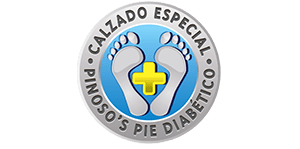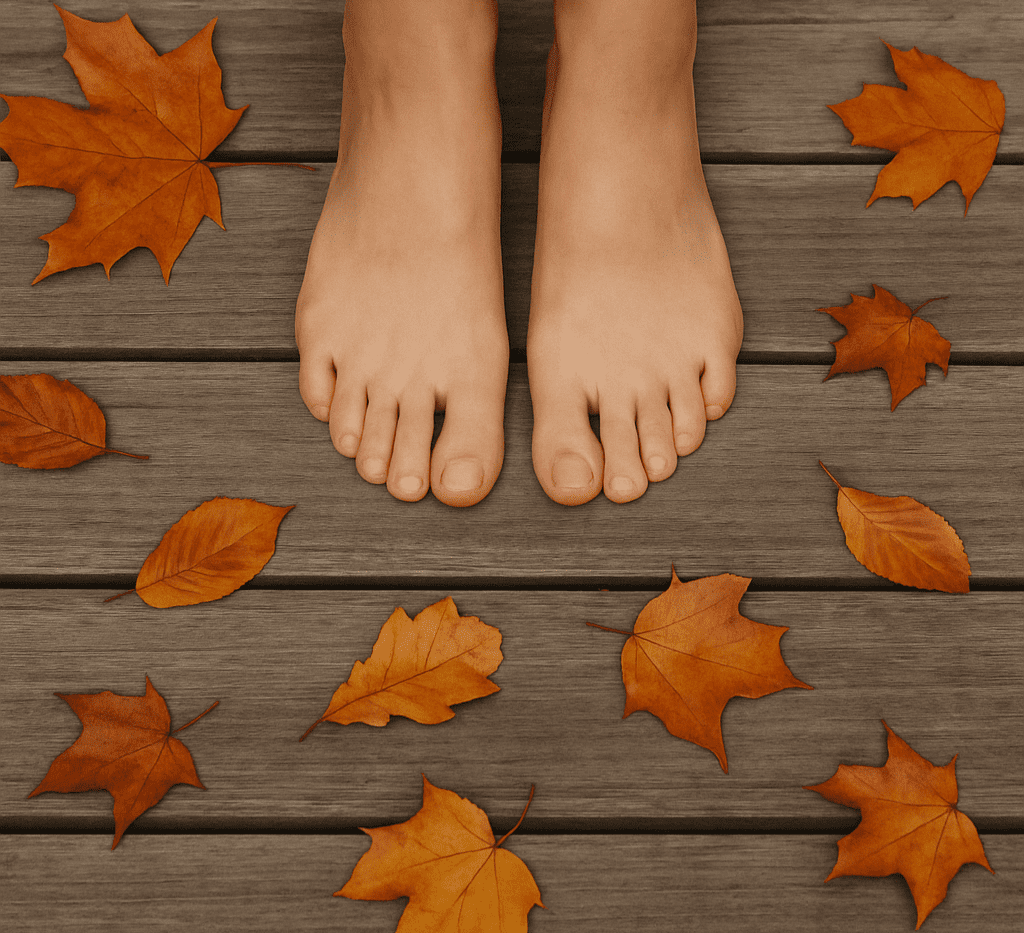Why do your feet suffer more with the change of season? Find out and take care of them this autumn.
Have you noticed that with the arrival of autumn, your feet feel more tired, sensitive or swollen? You’re not alone.
The change of season brings not only new routines, cooler temperatures, and fewer daylight hours, but also physical changes in our body that we often ignore… until our feet start to hurt. If you have sensitive feet, use orthotic insoles, or spend many hours on your feet, this article is for you.
Autumn and foot sensivity.
During the colder months, the circulatory system becomes less efficient in the extremities, which can lead to colder, swollen, or stiff feet. If we add inadequate footwear (narrow, with internal seams or non-breathable materials), discomfort is guaranteed.
Moreover, those who suffer from bunions, wide feet, or joint problems often notice increased pain or friction during this time of year. That’s why choosing the right shoes is not just a matter of comfort — it’s also a form of prevention.
Common foot problems during this season
In autumn we often see:
- Pain in the toes or instep.
- Discomfort due to lack of space for custom insoles.
- Reddened skin due to internal friction.
- Feeling of a “trapped foot” or “not being able to walk like before”.
All of this is more common when wearing conventional shoes with narrow lasts, rigid materials or poorly placed seams.
How to care for our feet when these discomforts arise.
When discomfort has already arisen, simply changing your footwear is not enough: there are small gestures that can make a big difference.
If your toes or instep hurt, try a foot bath with warm water and salt for 15 minutes. This helps relax the muscles and improve circulation. Afterwards, you can apply an arnica or cooling-effect cream to reduce inflammation.
For skin redness caused by friction, avoid covering it with synthetic fabrics. Use seamless cotton socks, and if needed, apply a soothing cream (such as aloe vera or calendula) several times a day. If there are blisters, protect them with special dressings to prevent infections.
If you feel pressure or discomfort while walking due to the change in footwear, alternate days with more open or flexible shoes, especially at home. You can also do gentle toe and sole stretches in the morning and at the end of the day. Elevating your feet for a few minutes before bedtime also helps reduce swelling.
And don’t forget to check your feet every night, especially if you have diabetes or reduced sensitivity. Detecting a blister or inflammation early can prevent complications.
How to choose the right footwear in autumn.
- Look for natural and breathable materials.
Lambskin, cowhide or technical elastic fabrics help prevent moisture build-up and improve thermal comfort. - Choose wide lasts.
Especially if your feet tend to swell in the cold or if you use orthopaedic insoles. - Avoid internal seams.
They can cause chafing or pressure on sensitive areas, especially if you have diabetes or joint deformities. - Go for removable insoles and flexible materials
Choose models that allow you to use your orthotic insoles without compromising interior space or stability. - Adjustable fastenings (Velcro, elastic, laces)
They allow the shoe to adapt to the actual volume of the foot, especially if it swells during the day.
If you’re looking for specific models for daily routines or long hours on your feet, we recommend visiting our comfort shoes sections for men and women, where you’ll find models with these features.
Conclusion: take care of your feet before they complain.
Your well-being starts with your feet.
And in autumn, choosing the wrong footwear can trigger discomfort that lasts all winter.
At Pinoso’s, we design every shoe with those who need it most in mind:
- People with wide feet
- People who use orthopaedic insoles.
- People with medical conditions or reduced mobility.
- And people who simply do not want to compromise on comfort.
This autumn, take a step towards comfort. Discover our full collection of wide-fit shoes and foot-sensitive footwear and feel the difference from day one.





No Comments